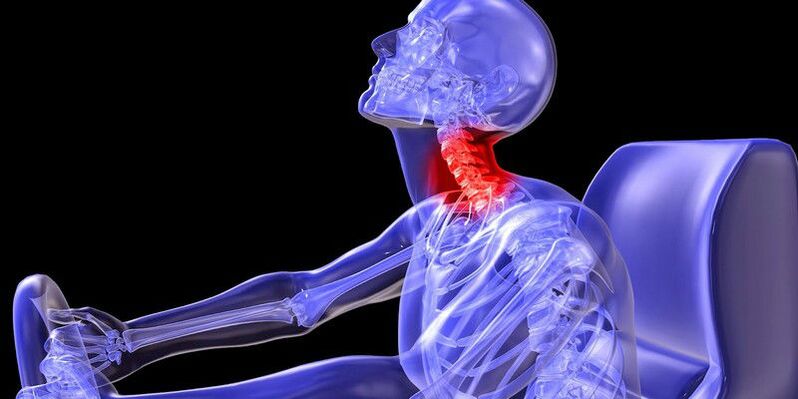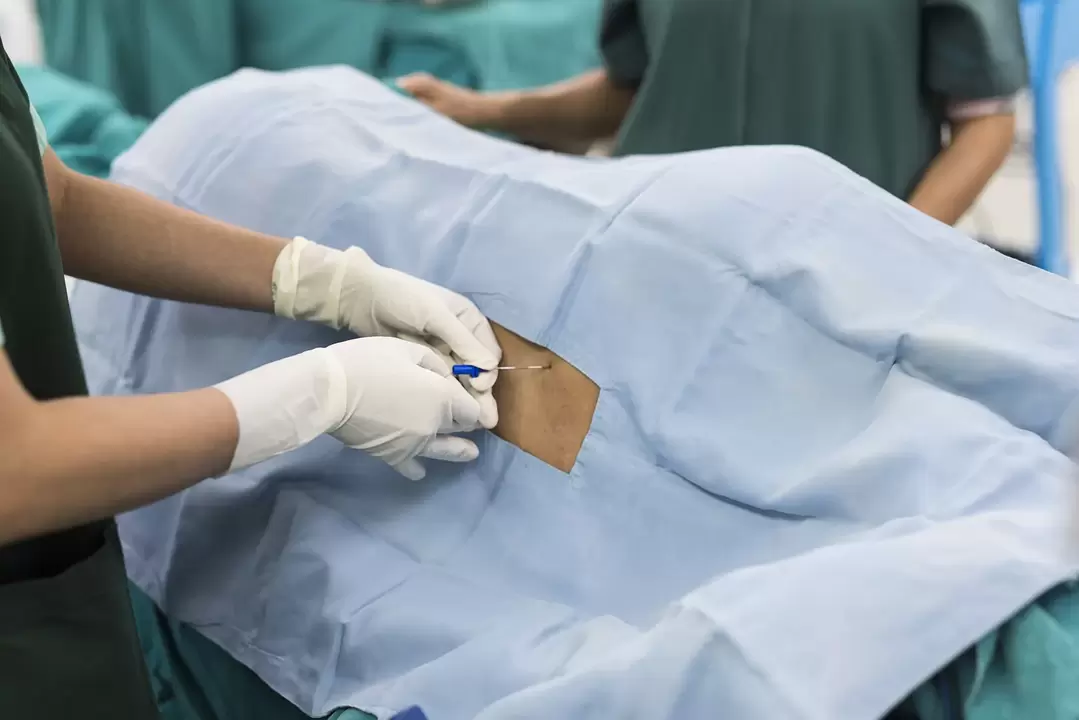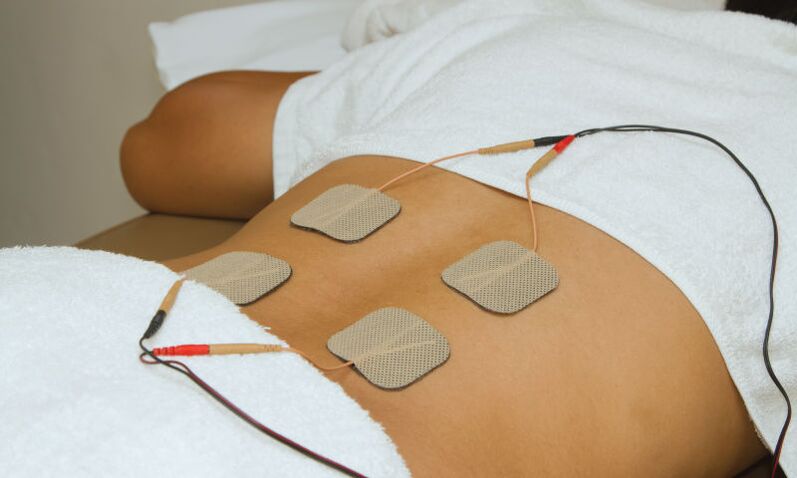
Back and neck pain occurs periodically in all people. This may be due to recent physical activity, a sedentary lifestyle or the presence of serious spinal pathologies.
In order to find out the cause of the pain and the possible complications of the diseases, a medical examination should be carried out in time. Severe back pain can often be caused by severe spinal damage due to a herniated disc or injury.
In elderly patients, pain in the lumbar region is associated with degenerative diseases of bone tissue. In the future, the development of the disease leads to the need for surgical intervention, when the drug treatment does not bring the expected effect. Therefore, you should not postpone seeing a doctor or independently determine the pathology.
Symptoms
Painful sensations begin to appear in the neck region, then move to the shoulders and the area between the shoulder blades. In this case, the patient feels pain when moving the head or shoulder joint. In the future, such manifestations become stronger, and the person feels stiffness when turning his head.
The main symptoms that indicate that a person has serious spinal diseases are:
- numbness of the shoulder joint and neck muscles;
- intermittent painful sensations in the upper back;
- muscle tension;
- clicking and characteristic sounds of the joints;
- restriction of free movement of the shoulder, which occurs after sleep;
- tingling sensation in soft tissues;
- sharp shooting from different sides of the back;
- discomfort around the ligaments and neck.
When these symptoms appear, a person begins to think about why his back and neck may hurt and what to do to avoid discomfort. In such cases, you need to know the root causes and start therapy in time.

Cause
In most cases, muscle spasms and subluxations of the vertebrae cause discomfort in the back and neck area. It is quite difficult to notice during a general medical examination, so a more effective diagnosis is needed. Computed tomography and magnetic resonance imaging are often prescribed, which also show minor structural changes. The first technique is excellent for examining bone formations in the spine, and MRI allows you to find out why muscles and soft tissues hurt.
Muscle cramps
The main reason for pain in the back can be considered muscle spasms. They can occur over time after a minor cramp develops into a serious muscle strain. The following factors may be the cause:
- prolonged stay in uncomfortable situations;
- incorrect position during sleep;
- high physical activity and active activities;
- hypothermia, as a result of which inflammatory processes occur in the muscles.
Even a small draft can cause muscle spasms. Improper use of air conditioning and large temperature differences lead to inflammation of muscle tissue.
Subluxation of the vertebrae
In case of mechanical damage, the vertebrae move to the one below them. Usually, this phenomenon is observed in case of serious injuries during car accidents. Subluxations are accompanied by damage to the ligament apparatus, muscle tension and damage to the joint capsule. The doctor can recognize the pathology from the strong pain experienced during palpation, when turning the head and moving the neck.
Subluxations are treated by surgeons and traumatologists. A person can adjust the vertebra independently, but only after a highly qualified consultation with a specialist. In mild cases of pathology, fixation with a Shants collar is prescribed for one month.

Osteochondrosis of the cervical spine
Another cause of pulling and aching pain in the neck can be osteochondrosis. This is a degenerative disease of the spine that occurs as a result of metabolic disorders. The neck area has a weak muscular ligament, which puts a lot of strain on the vertebrae. As a result, the vertebra of the artery becomes trapped and the necessary nutrition of important brain structures does not occur.
The following factors can cause the development of osteochondrosis:
- disturbed metabolism;
- sedentary lifestyle;
- genetic predisposition;
- hypothermia;
- prolonged stay in uncomfortable situations;
- obesity.
In order to prevent the occurrence and further development of osteochondrosis, it is enough to perform gymnastic exercises and follow the doctor's instructions.
Intervertebral hernia
Intervertebral hernia is an inflammatory and degenerative disease associated with deformation of the intervertebral disc and rupture of the annulus fibrosus. The intervertebral discs play the role of shock absorbers, reducing the destructive effect of the vertebrae on each other.
Over time, they can lose elasticity and flexibility, causing severe pain and discomfort. In the case of an intervertebral hernia, the patient may experience frequent headaches and muscle pain. Insufficient nutrition of the brain causes dizziness, weakness and constant sleepiness.
Possible complications
Even minor pains can affect a person's health or cause serious complications that require immediate surgical intervention. Ignoring inflammatory and degenerative diseases leads to pathologies of the vascular system, the occurrence of severe throbbing pains and disruption of the brain.
After the vertebral artery is blocked, a person experiences weakness, fatigue, visual hallucinations, and other symptoms. If the patient does not seek medical help in time, diseases such as cerebral ischemia and stroke may occur. They can be fatal over time.
Diagnosis of pathologies
After the examination by the doctor, one of the diagnostic methods of research is prescribed for a wider understanding of the pathology. With mechanical injuries and injuries to the vertebrae, CT (computed tomography) is prescribed, which is based on X-rays. X-rays are recorded in all tissues of the body and appear differently on the monitor screen. The specialist receives dozens of layered images with a three-dimensional image of the bone structures of the spine.
The method has its own contraindications. During pregnancy and breastfeeding, it is better to choose MRI (magnetic resonance imaging), which uses electromagnetic waves to detect degenerative diseases and soft tissue pathologies. A modern tomograph allows you to take high-quality images of all parts of the back in a few minutes and find out why the back and neck hurt.
If the doctor suspects an infectious disease of the central nervous system, polyneuropathy and other diseases of the central nervous system of various etiologies, a lumbar puncture is prescribed. This method is widely used in neurology. During the procedure, the patient receives spinal anesthesia, or spinal anesthesia, when an anesthetic is injected into the subarachnoid space. The injection should be given as close as possible to the roots of the spinal nerves.

Medical treatment
When the first symptoms appear, most people solve the problem with anti-inflammatory and pain-relieving drugs. To start the therapeutic effect, the following drugs are used:
- Analgesics based on metamizole sodium or nalbuphine with a pronounced analgesic effect;
- Non-steroidal anti-inflammatory drugs that act directly on the focus of inflammation and effectively relieve swelling;
- Muscle relaxants, which reduce the tone of muscle tissue and relieve tension;
- Local anesthetic and anti-inflammatory ointments.
The doctor can also prescribe tablets and ampoules, which have an immediate effect. As a complex therapy, ointments or gels are prescribed to relieve swelling and chondroprotectors. This group of drugs restores the joints and has an anti-inflammatory effect.
Physiotherapy procedures
In addition to drug treatment, the patient prescribes physiotherapy procedures. This can be therapeutic yoga, special massage or mineral water and mud treatment. To choose the right gymnastic exercises and procedures, you should consult a doctor who prescribes therapeutic courses. In some cases, stretching exercises can lead to deterioration, so physical therapy alone is not recommended.

Another method of treatment is manual therapy. The specialist performs a manual massage in advance to prepare the soft parts for further exposure. Then it goes to the joints and the spine. Such manual manipulations effectively improve blood flow and relieve pain. The deep effect on the muscles of the back allows you to remove tension and swelling.
Some specialists prescribe electrophoresis to the patient. This method is based on constant electrical discharges that are applied to diseased areas of the body. The method has the following advantages: reduction of the inflammatory process in the muscles of the back and neck, elimination of edema and pain, reduction of muscle tone, improvement of blood supply to the tissues of the back. The therapeutic effect can be observed after the first procedure.


























